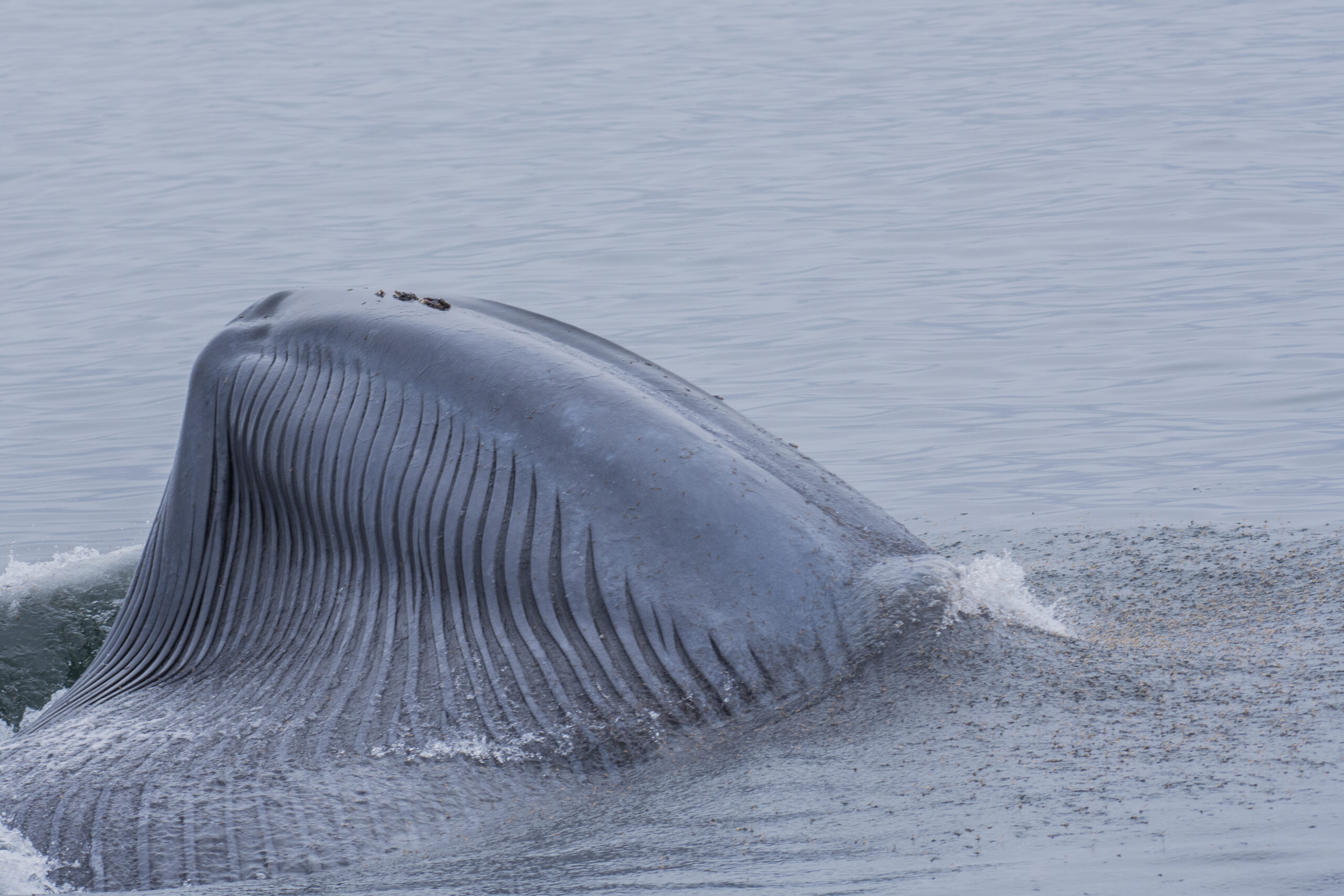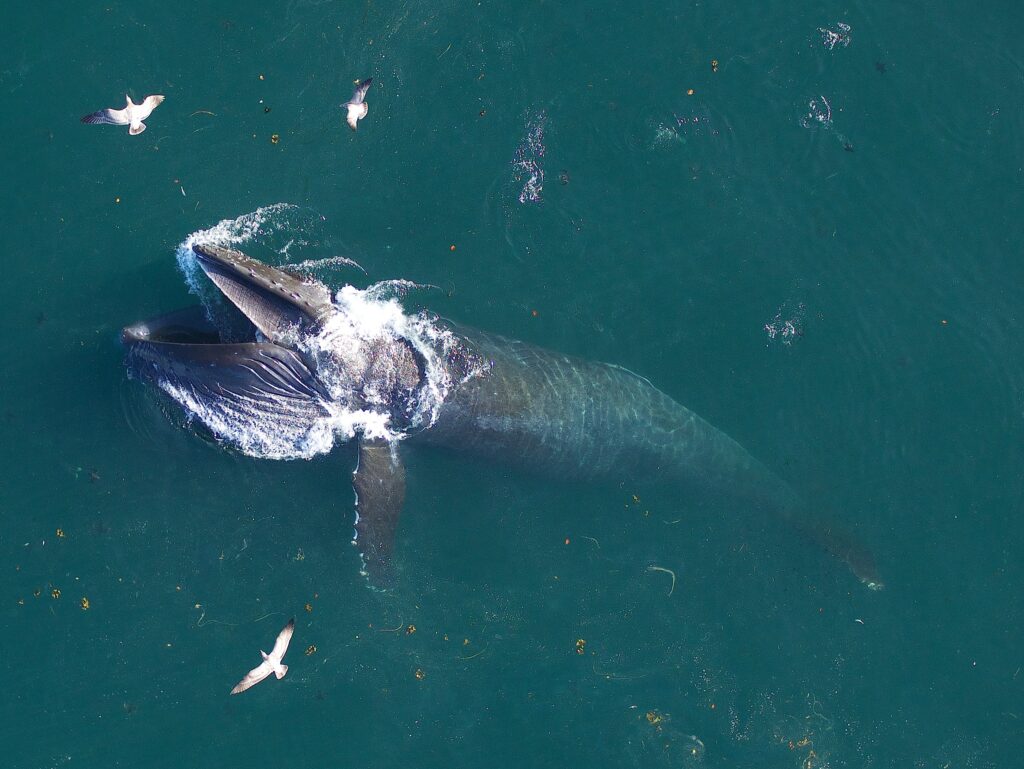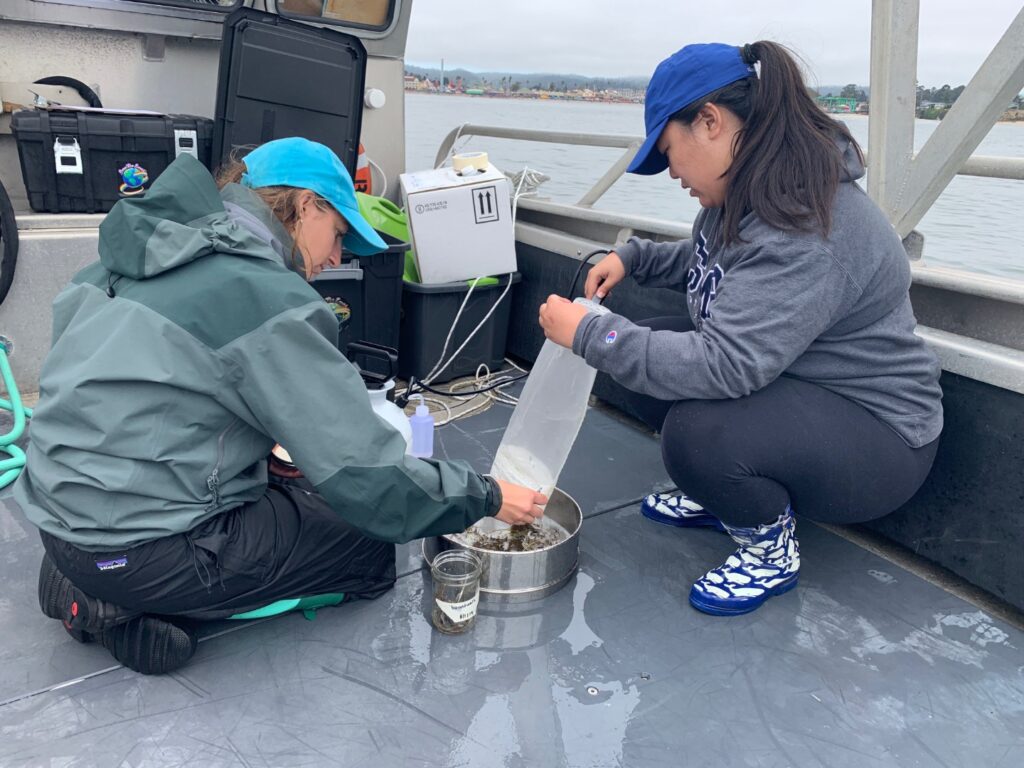
The age of humans, termed the Anthropocene, might just as well be considered the age of plastic. The dangerously durable material, made ubiquitous in products and packaging through the late 20th century, has inundated our planet’s environment. Today, miniscule plastic pieces are present in deep-ocean sediment, high-mountain snow and just about every place in between. Plastic waste has also entered the marine food web, and according to new research, baleen whales are ingesting staggering quantities.
Blue whales off the California coast may consume as many as a billion pieces, or up to several tons, of microplastic in the course of a summer feeding season, according to a paper published today in Nature Communications.
The authors of the paper, led by Cal State Fullerton biologist Shirel Kahane-Rapport, focused their research on the California Current Ecosystem. They studied the movements and feeding behavior of 191 tagged whales and combined this information with data from water and prey samples collected at locations between Point Reyes and San Diego.
They found that plastic ingestion in whales occurred almost entirely via trophic transfer – that is, via the prey they eat – rather than filtering it directly from the water through their baleen. The scientists assessed whale engulfment capacity, feeding rates, and densities of prey – especially krill and anchovy. They considered a range of existing estimates of plastic particle occurrence in marine forage species, and they assumed that any krill or anchovy containing microplastic contained just one piece.
“[T]his is likely an underestimate,” they wrote.

Still, after scaling up these numbers, they predicted that a large blue whale could ingest 10 million tiny pieces of plastic every day – a quantity weighing somewhere between 5 and 95 pounds, depending on the size and composition of the plastics. They estimate that krill-dependent whales, like blues and fins, consume vastly more plastic than fish-foraging whales, like humpbacks, that may eat 200,000 pieces of microplastic daily.
Whether these rates of plastic consumption are harming the creatures isn’t yet clear. Prior sampling work has found microplastic particles in whale feces, Kahane-Rapport says. That means at least some of the debris passes through the animals’ digestive systems. However, to what extent small plastic pieces are absorbed from a whale’s stomach and intestines into other tissues and organs – a process called translocation – is not yet known.
“That’s the next question,” Kahane-Rapport says.
Matthew Savoca, a coauthor on the paper, says toxic chemicals can bind to plastic molecules and, by this hitchhiking process, could harm feeding marine life.
“Plastics may be a Trojan horse for other toxins,” he says.
The Ocean Conservancy’s Ocean Plastics Research program manager Britta Baechler, who was not involved in the new study, says it is difficult to understand if, how, and to what extent microplastic ingestion harms marine life. Plastics, she says, represent a category of contaminants almost endlessly diverse in chemical composition.
“Meanwhile, whether an animal will be impacted is also dependent on many variables, like the animal’s size, the type and concentration of microplastics encountered, physical fitness of the animal, and other factors,” she says. Still, she adds, there is “ample cause for concern.” She says microplastic exposure can impair growth, reproduction, and feeding behaviors, and cause weight loss, energy depletion, and cell damage. Microplastic health impacts, Baechler adds, can be physical or chemical in nature.
In 2018, a team of Australian researchers, led by Amanda Dawson of Queensland’s Griffith School of Environment, published results of a study showing that krill ingested and eventually defecated microplastic particles with no observed rates of mortality or bioaccumulation in the animals’ tissues. At face value, these findings are good news, though the authors offered a warning that potential sublethal impacts “should be the focus of further ecotoxicological investigation.”

These scientists also observed something else – that krill can break ingested microplastics down to the nanoscale. Baechler, familiar with these findings, takes them as a warning.
“This may mean those very small microplastics converted into nanoplastics by the krill could move into the gut of the blue whale and ultimately migrate into other parts of its body,” she says.
The persisting nature of plastic, which continuously breaks down into smaller pieces, makes the prospects of cleaning up the world’s plastic waste all but impossible. Plastic pollution is expected to increase through at least 2050, according to Kahane-Rapport and her colleagues’ new paper. Even if it ended today, problems would persist and “get worse before they get better,” as Savoca puts it.
Kahane-Rapport says she hopes her findings, though grim, lead not to despair but to progress. She says there are ways everyday consumers can minimize their own plastic trail while pressuring industries to curb production.
“A lot of the problems of plastic pollution come from large corporations,” she says. “Don’t buy from them unless they show you an improvement in their behavior and way they deal with their waste.”
She says the model she and her colleagues developed to assess microplastic ingestion rates is publicly available, and she hopes it will facilitate future studies in other parts of the world and ultimately hone the scientists’ understanding of how ingested microplastics affect the marine ecosystem.
Top photo: Blue whale feeding. Photo courtesy Matthew Savoca
Related Stories
MORE
How Microplastics Get in Watersheds and What You Can Do, Popular Mechanics, April 2022